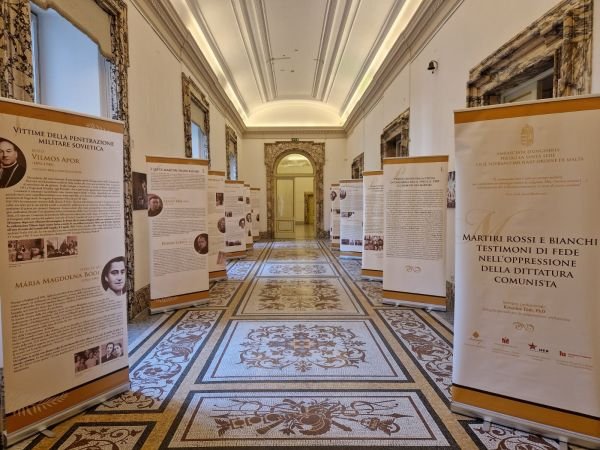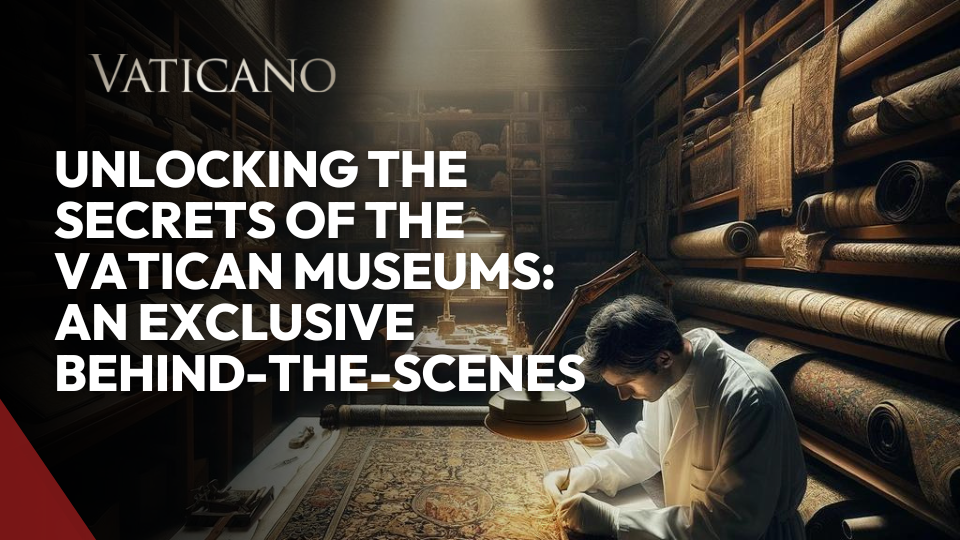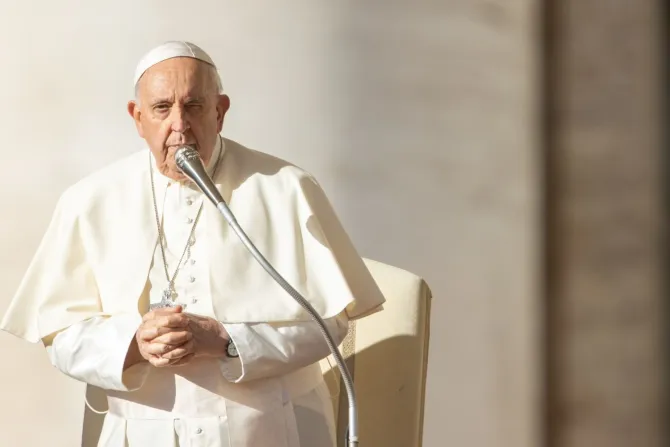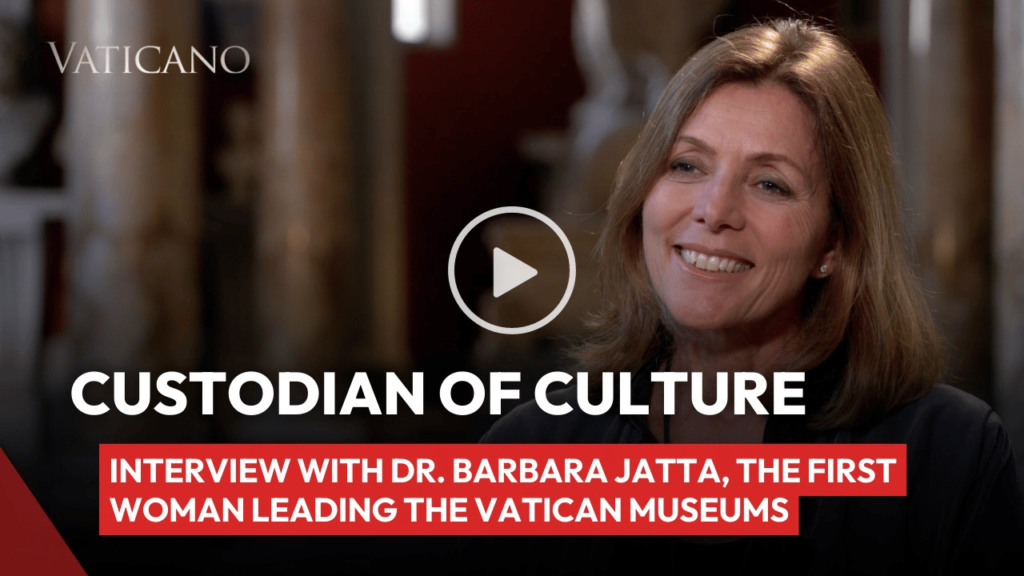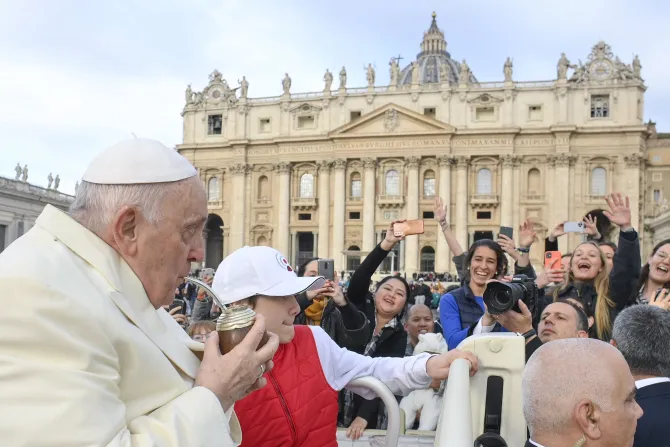A faith “forged in blood”: this is how Pope Francis described the faith of the Hungarian people during his trip to the country. A journey whose background was not only the presence of the apostle of the Church of Silence, Cardinal Jozef Mindszenty, also mentioned by the Hungarian president Katalin Novak in her speech, but who also lived on the story of the new martyrs of Hungary, victims of oppression Communist.
An exhibition organized by the Embassy of Hungary to the Holy See has been inaugurated, providing a follow-up to the Pope’s trip and telling the story of the great faith of the Hungarian people. The exhibition is dedicated to the red and white martyrs of Hungary, victims of communist oppression. Red martyrs are those who died at the hands of their oppressors, while white martyrs died due to suffering, but not directly by their oppressors. They are all martyrs, and it is to them that the Hungarian Embassy to the Holy See has dedicated the exhibition “Red and White Martyrs: Witnesses of Faith in the Oppression of Communist Dictatorship,” and a roundtable on the topic held on May 15, 2023.
The exhibition, and the historical memory it represents, is part of the tasks of the Hungarian Embassy to the Holy See, which also has a special delegate for archival cooperation with the Holy See, Professor Kristzina Tóth.
At the roundtable on May 15, after greetings from the Hungarian Ambassador to the Holy See, Eduard Habsburg-Lothringen, Archbishop Fabio Fabene, Secretary of the Congregation for the Causes of Saints, recalled the martyrs of the 20th century, honored by John Paul II with an ecumenical liturgy in the Colosseum in Rome during the Jubilee of 2000.
Gergely Kovács, representative of the Mindszenty Foundation and postulator of the cause of beatification of Cardinal Jozef Mindszenty and other martyrs, recalled that there are 16 causes of canonization of Hungarian martyrs, and 12 of these are linked to the communist persecution of the Church.
The Ukrainian Greek Catholic Bishop Irynej Bilyk, a canon of the Basilica of Santa Maria Maggiore, spoke about how he worked in the former Soviet Union to save souls through the example of the late Cardinal.
The three speakers discussed how the persecution of the Church developed in countries under the influence of the Soviet Union, considering differences and similarities and explaining how the Church managed to survive and even carry-on Catholic education.
Finally, Professor Tóth explained the rationale behind the exhibition, starting with the difference between red and white martyrs. “The former,” she said, “are those who were killed for their faith, and the latter are those who, while not dying immediately due to torture and inhumane treatment, suffered without bloodshed for their faith.”
The exhibition, which features a selection of Hungarian martyrs grouped by theme, includes a brief biography of two martyrs on each roll-up, with one or two important moments highlighted in bold.
The exhibition offers a general overview of the persecution of the Church, outlining the tactics used to gradually destroy it. It then moves on to the moment when Soviet troops entered Hungary, opening an era marked by communist ideology, and presents the stories of the martyrs, including Bishop Vilmos Apor of Győr, who protected women hidden in his residence from Soviet soldiers, and Mária Magdolna Bódi, a worker who defended her vow of chastity, faith, and Christian morality.
The exhibition also features the stories of seven Franciscan martyrs, four of whom were victims of communism in show trials that discredited the Church and its representatives.
Finally, there are six red martyrs and six white martyrs, grouped into three themes each. The red martyrs are victims of murder, those who suffered in secret for the salvation of souls, and those without a sentence or awaiting a sentence. The white martyrs are grouped among those engaged in youth education, politicians who actively defended their faith, and the fruits of suffering.
The exhibition also includes a section dedicated to Cardinal Mindszenty, who was arrested and sentenced to life imprisonment in a show trial 75 years ago on December 26, 1948.
The exhibition will be on display until May 26, and according to Professor Tóth, “the faith of the martyrs represents roots that intertwine with history. It is particularly important for a nation to know its own past, to have strong and solid roots, because that is how it can withstand the storms of the present. We draw inspiration from the faith and example of the martyrs to effectively face the challenges of the twenty-first century.”

